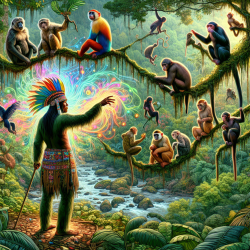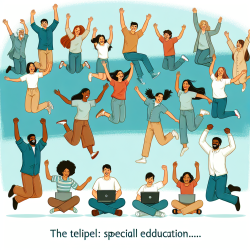Introduction
In the heart of the Peruvian Amazon, the Maijuna indigenous community offers a unique perspective on the relationship between humans and primates. Their deep-rooted knowledge and cultural practices provide invaluable insights for primate conservation efforts. As a practitioner, understanding and integrating these insights can significantly enhance your skills and approach to conservation.
The Maijuna's Connection with Primates
The Maijuna people of Sucusari have a profound connection with the primates inhabiting their territory. These animals are not only a source of sustenance but also hold cultural and symbolic significance. The community recognizes 11 species of primates, with seven being particularly culturally salient. These include the common woolly monkey (Lagothrix lagotricha) and the red howler monkey (Alouatta seniculus), which are integral to their traditional beliefs and stories.
Implementing Ethnoprimatological Insights
Ethnoprimatology, the study of the interactions between humans and non-human primates, highlights the importance of incorporating indigenous knowledge into conservation strategies. Here are some ways practitioners can implement these insights:
- Understand Cultural Significance: Recognize the cultural importance of primates to local communities. This understanding can guide conservation priorities, ensuring efforts are culturally sensitive and effective.
- Engage with Local Communities: Collaborate with indigenous groups like the Maijuna to incorporate their traditional knowledge into conservation plans. This can lead to more sustainable and accepted practices.
- Focus on Key Species: Prioritize the conservation of species that hold high cultural and ecological value, such as the common woolly monkey. These species are often keystone species in their ecosystems.
Encouraging Further Research
While the study provides a comprehensive look at the Maijuna's relationship with primates, it also opens the door for further research. Practitioners are encouraged to explore:
- Long-term Impacts: Investigate the long-term effects of integrating ethnoprimatological studies into conservation efforts.
- Cross-Cultural Comparisons: Compare the Maijuna's practices with other indigenous communities to identify universal principles and unique differences.
- Human-Primate Health Interactions: Study the health implications of human-primate interactions, particularly in terms of zoonotic disease transmission.
Conclusion
By embracing the insights from the Maijuna community, practitioners can enhance their conservation strategies and foster a more inclusive approach to primate conservation. This integration not only benefits primate populations but also supports the cultural and economic needs of indigenous communities.
To read the original research paper, please follow this link: The ethnoprimatology of the Maijuna of the Peruvian Amazon and implications for primate conservation.










